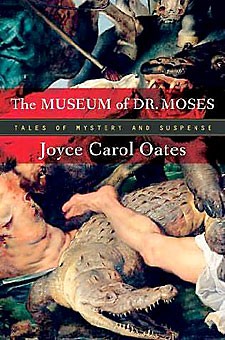Joyce Carol Oates’s new collection of stories, “”The Museum of Dr. Moses: Tales of Mystery and Suspense,”” offers 10 short pieces that will thrill and shock you.
Oates – famous for her more literary writing often used to pique students’ interest in freshman English classes – takes hold of the horror genre and uses her expertise to make the stories more vivid, more real and much scarier.
An interesting aspect of some of these stories is Oates’s use of the second person, involving readers as “”you”” for part of the action. This is used in “”Stripping”” and “”Hi! Howya Doin!”” to implicate the readers as guilty. The former story describes the showering and cleaning process of you, the killer, after a murder, while the latter tells of the unfortunate fate of an overly friendly jogger when you run around the bend.
In both, it is disconcerting to be put at fault when normally reading is more of a spectator pastime.
“”The Museum of Dr. Moses: Tales of Mystery and Suspense””
Joyce Carol Oates
Harcourt
List price $24, www.amazon.com
4 stars!
Oates plays with this reader interaction in a different way in the most disturbing story of the collection, “”Valentine, July Heat Wave,”” in which a newly separated man waits for you, his wife, to come home and discover the horrific surprise he has in store.
Other notably impressive stories deal with similarly dark subjects.
“”Suicide Watch”” follows a conversation between a father and his unstable son, who, after several domestic disturbance complaints and the disappearance of his own wife and son, is locked in a mental institution. When the father finally gets his son to describe where his grandson is, the answer, involving plenty of gore and the U.S Postal Service, is most dreadful, and the father has to wait for a delivery in order to find out if his son is telling the truth.
“”Bad Habits”” is also emotionally charged and describes the lives of the children of a newly convicted serial killer whose own bad habits, such as picking their noses and biting their nails, make them outcasts from their family just like their father.
Oates’s stories go beyond the pure horror of her subject matter and give each situation a human side that draws out our empathy as well as our revulsion. “”The Museum of Dr. Moses”” stays clear of overly fantastical situations, choosing to scare us from the firm base of our own known world, in the same way that many of Stephen King’s better stories do.
These stories make for great pleasure reading, and would be especially chilling if read around a campfire at Halloween.









